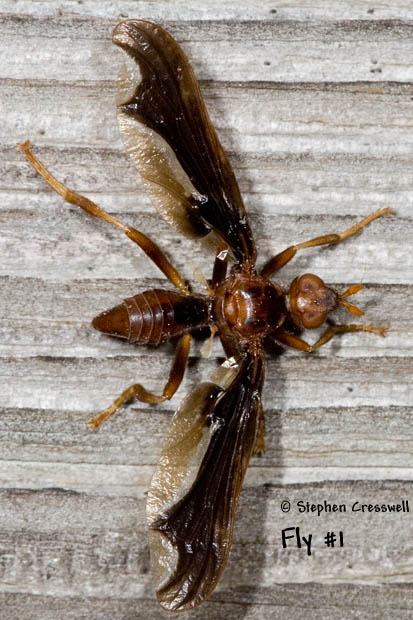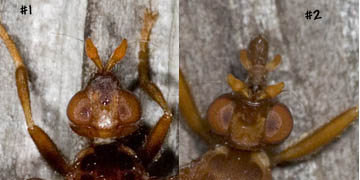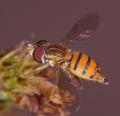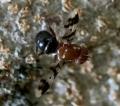Diptera.info :: Identification queries :: Diptera (adults)
Who is here? 1 guest(s)
|
More Fun with Pyrgotidae
|
|
| Stephen |
Posted on 19-11-2006 14:51
|
|
Member Location: West Virginia USA Posts: 1322 Joined: 12.04.05 |
Reviewing my photographs from last April from Mississippi (far South of the USA) I came across my Pyrgotid images. Now I am starting to wonder, do I have two different species here? These were attracted to lights, 14 April 2006. I will post the two flies first, then some detailed views. I think Fly #1 is Pyrgota undata. Comments appreciated. Two different species? Both female? Steyskal says in Pyrgotidae the abdomen is usually elongated, and that in females "segment 7 sometimes longer than rest of abdomen." Stephen attached the following image:  [102.56Kb] Edited by Stephen on 19-11-2006 14:52 --Stephen Stephen Cresswell www.americaninsects.net |
| Stephen |
Posted on 19-11-2006 14:54
|
|
Member Location: West Virginia USA Posts: 1322 Joined: 12.04.05 |
Fly #2. Different species?
Stephen attached the following image:  [123.54Kb] --Stephen Stephen Cresswell www.americaninsects.net |
| Stephen |
Posted on 19-11-2006 14:55
|
|
Member Location: West Virginia USA Posts: 1322 Joined: 12.04.05 |
Here are the abdomens compared, Fly #1 and Fly #2.
Stephen attached the following image:  [58.97Kb] --Stephen Stephen Cresswell www.americaninsects.net |
| Stephen |
Posted on 19-11-2006 14:58
|
|
Member Location: West Virginia USA Posts: 1322 Joined: 12.04.05 |
The heads compared. What on earth is going on with Fly #2 and what appear to be doubled antennae? I thought perhaps there was a second fly under the top one and that they were mating, but if so that second fly doesn't show. Or is this simply a species that has this bizarre doubled antenna? Stephen attached the following image:  [41.91Kb] --Stephen Stephen Cresswell www.americaninsects.net |
| Steve Gaimari |
Posted on 19-11-2006 18:35
|
|
Member Location: Sacramento, California, USA Posts: 169 Joined: 08.10.04 |
For Fly#2 you have a different angle on the head so that you can see the mouthparts. That is what looks like the second pair of antennae - the mouthparts with the paired maxillary palpi. |
| Stephen |
Posted on 19-11-2006 20:54
|
|
Member Location: West Virginia USA Posts: 1322 Joined: 12.04.05 |
Ah, that explains the mouthparts question, thanks, Steve! The angle was really the same for the two photos, so Fly #2 must have been extending his mouthparts forward for some reason while Fly #1 wasn't.
--Stephen Stephen Cresswell www.americaninsects.net |
| Jump to Forum: |














